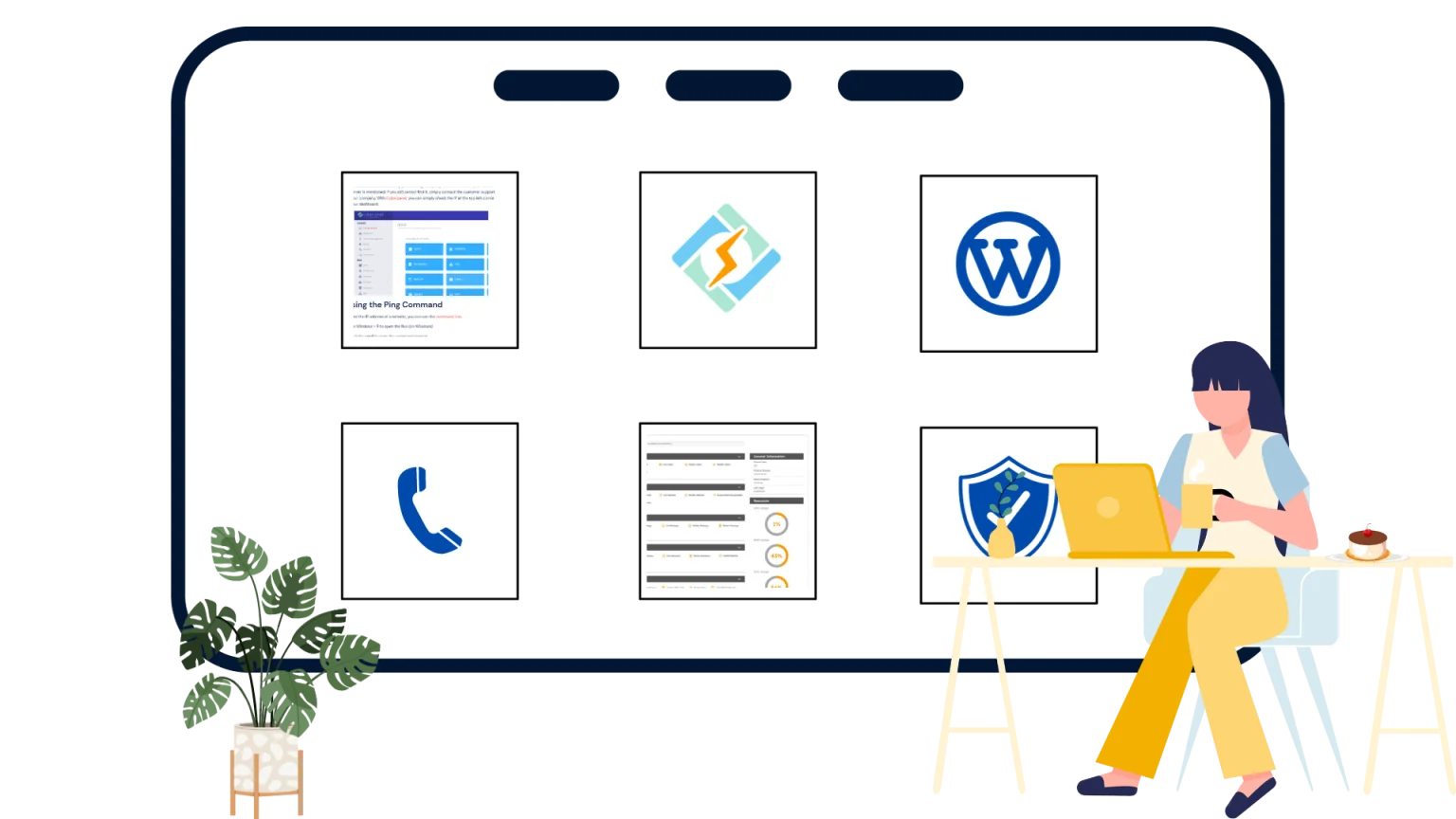By Scott Roeben
Cyber security is more important than ever. We use the internet every day—for shopping, banking, healthcare, learning, and fun. But cyber criminals are getting smarter. They find new ways to attack websites and apps. In 2025, it’s not just about protecting computers. Every industry has its own risks. What works for social media may not work for a hospital or bank. This article looks at the top cyber threats in ten big areas: e-commerce, online gambling, fintech, social media, SaaS, healthcare, education, gaming, cryptocurrency, and AI.
Cyber Security Threats in E-Commerce
E-commerce websites are often targeted by cyber criminals. These sites handle payments and customer details. Hackers may send fake emails to steal login info. They can also add hidden code to steal credit card numbers during checkout. Some even create fake checkout pages that look real but send the information to criminals. To stay safe, online stores should use secure payment systems, keep their software updated, and add extra layers of protection like two-factor authentication and SSL encryption. Customers should also watch for signs of fake websites and only shop from trusted sources.
Cyber Security Threats in the Online Gambling & Betting Industry
Online gambling platforms like https://ind.1xbet.com/slots face special cyber security risks because they handle large amounts of money and attract many users during big events. Hackers may try to overload the site with DDoS attacks to crash it, or they might steal user accounts to access funds. Some even try to exploit the system using fake data or weak spots in the website’s API. To stay safe, gambling sites must follow strict rules. These include KYC (Know Your Customer) and AML (Anti-Money Laundering). These rules help check users and stop fraud. Both the website and players should care about security. Use strong passwords. Turn on two-step login. And only play on trusted sites.
Cyber Security Threats in FinTech & Online Banking
FinTech services and online banking apps make managing money easy, but they also come with serious cyber security risks. Criminals may use tricks like man-in-the-middle (MITM) attacks to intercept your data while it’s being sent, or install malware on phones to steal login details. Some even create fake identities—called synthetic fraud—to open accounts and move money illegally. To protect users, many apps now use strong security tools like multi-factor authentication (MFA), which asks for more than just a password, and behavioral biometrics, which recognize how you type or swipe. These technologies help keep your money and personal data safe in the digital world.
Cyber Security Threats in Social Media Platforms
Social media platforms are common targets for cyber attacks because they hold so much personal information and have millions of active users. Hackers often create fake profiles or send phishing messages to trick people into sharing private details or clicking harmful links. Deepfakes—videos or images that look real but are fake—can spread false information quickly and damage someone’s reputation. Misinformation campaigns are also used to confuse people or influence public opinion. To stay safe, users and influencers should protect their accounts with strong passwords, enable two-factor authentication, and be careful about who they interact with online.
Get exclusive access to all things tech-savvy, and be the first to receive
the latest updates directly in your inbox.
Cyber Security Threats in SaaS and Cloud Applications
SaaS and cloud applications are popular for businesses, but they also come with cyber security risks. Sometimes, simple mistakes like misconfigured settings or weak APIs (tools that apps use to talk to each other) can leave data exposed. Shadow IT—when employees use unapproved apps—can create hidden dangers. Because cloud services often store data for many users in one place (multi-tenancy), one weak spot can affect many customers. To stay safe, SaaS providers should follow a “zero-trust” approach, which means never automatically trusting anyone or anything and always checking for threats. This helps keep company data secure, even in a shared cloud environment.
Cyber Security Threats in the Healthcare and Telemedicine Sector
The healthcare and telemedicine sector faces serious cyber threats because it stores sensitive patient information. Hackers often target hospitals and apps with ransomware—locking systems and demanding money to unlock them—or try to steal personal health records. Devices connected to the internet, like smart monitors, can also be hacked if not secured properly. There are strict rules like HIPAA and GDPR that protect patient data, and breaking them can lead to big fines. That’s why it’s important for hospitals and health apps to use strong endpoint protection on all devices, making sure everything is secure from the inside out.
Cyber Security Threats in EdTech and Online Learning Platforms
EdTech and online learning platforms have become very popular, but they also face cyber security challenges. During remote classes, some schools experienced “Zoombombing,” where strangers entered video calls to cause trouble. Student accounts can also be hacked if passwords are weak or reused. Since many users are children, there are strict rules about collecting and storing their data safely. To protect students and teachers, schools should use secure platforms, teach online safety habits, and use tools like passwords, waiting rooms, and screen-sharing controls to keep virtual classrooms safe and private.
Cyber Security Threats in Online Gaming and Virtual Worlds
Online gaming and virtual worlds are exciting places, but they’re also targets for cyber attacks. Hackers may try to steal in-game currency, use bots to cheat, or overload the game servers so others can’t play. Because games run in real time with players from all over the world, it’s hard to stop every threat as it happens. That’s why gaming companies use anti-cheat systems and fraud detection tools to catch unfair behavior and protect players. Gamers can help too by keeping their accounts secure with strong passwords and avoiding suspicious links or downloads.
Cyber Security Threats in Cryptocurrency and Blockchain Networks
Cryptocurrency and blockchain networks offer new ways to manage money, but they also come with big cyber security risks. Scams in DeFi (decentralized finance) apps, rug pulls where developers run off with investor money, and fake wallet links used for phishing are common problems. Hackers can also find bugs in smart contracts and use them to steal funds. To stay safe, crypto users should use trusted exchanges, enable extra security like two-factor login, and check if a project has passed a proper code audit. Decentralized identity systems are also helping make crypto platforms more secure and harder to fake.
Cyber Security Threats in AI and Machine Learning Systems
AI and machine learning systems are powerful tools, but they also face cyber security risks. Hackers can try to trick AI models by feeding them bad data (called model poisoning) or by using special prompts to make them act in unexpected ways, especially in large language models (LLMs). Some attacks even use images or messages designed to confuse the AI—these are called adversarial attacks. Since many security tools now use AI, it’s important to make sure the AI itself is safe and reliable. That’s why companies need secure pipelines, regular testing, and strong rules to use AI responsibly and avoid misuse.
<iframe width=”560″ height=”315″ src=”https://www.youtube.com/embed/CLiC9njgvkY?si=iJ8oxtb8fYHMqa84″ title=”YouTube video player” frameborder=”0″ allow=”accelerometer; autoplay; clipboard-write; encrypted-media; gyroscope; picture-in-picture; web-share” referrerpolicy=”strict-origin-when-cross-origin” allowfullscreen></iframe>
Conclusion
Cyber security is important for every industry because online threats can affect anyone—from shoppers and gamers to hospitals and banks. Each field has its own risks, so there’s no one-size-fits-all solution. That’s why businesses need to use strategies that match their specific needs, and stay one step ahead of hackers by being proactive. Regular updates, strong passwords, two-factor authentication, and staff training can make a big difference. Staying informed and following best practices helps everyone—companies and users—stay safer in today’s digital world.
FAQ
What are the biggest cyber threats faced by different online industries?
Different industries face different cyber threats. E-commerce deals with phishing and payment fraud, healthcare faces data breaches and ransomware, and crypto platforms often see scams and smart contract hacks. Each field needs a specific security approach.
Why do hackers target industries like online banking, gaming, or healthcare?
Hackers target these industries because they handle valuable data—money, health records, or virtual assets. These systems are often complex, and even small weaknesses can be exploited for big rewards.

How can businesses protect themselves from cyber security threats?
Businesses can stay safe by using strong passwords, multi-factor authentication, secure software, regular updates, and staff training. Following industry-specific rules like GDPR or HIPAA also helps protect sensitive data.
What should users do to stay safe online across different platforms?
Users should use strong, unique passwords, avoid clicking unknown links, enable two-factor authentication, and only use trusted apps or websites. Staying alert and informed is the best defense against most cyber threats.


